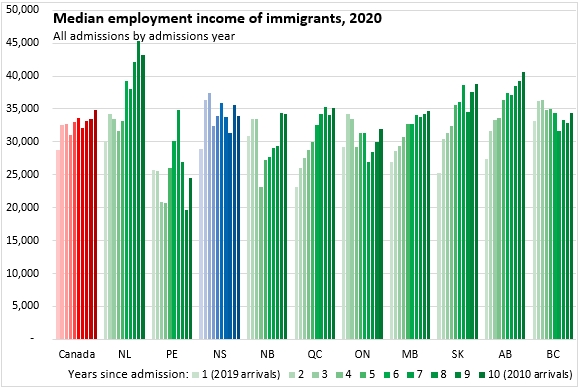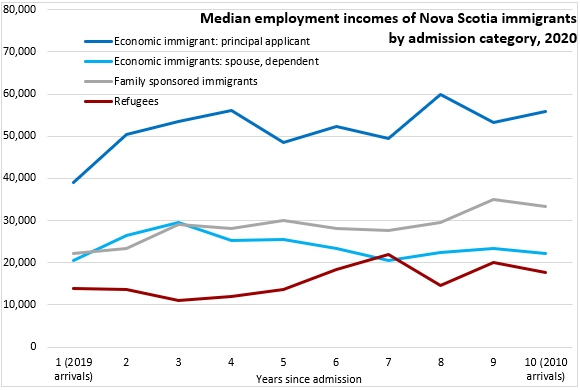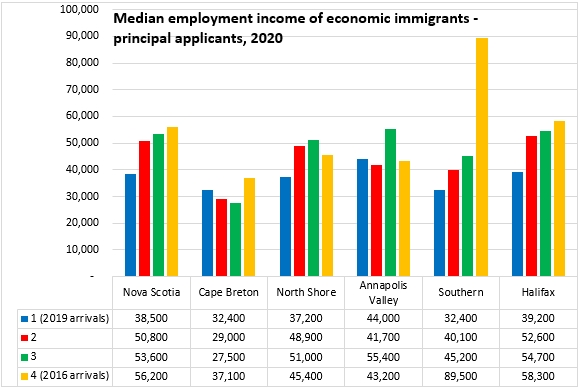The Economics and Statistics Division maintains archives of previous publications for accountability purposes, but makes no updates to keep these documents current with the latest data revisions from Statistics Canada. As a result, information in older documents may not be accurate. Please exercise caution when referring to older documents. For the latest information and historical data, please contact the individual listed to the right.
<--- Return to Archive
For additional information relating to this article, please contact:
December 05, 2022INCOMES OF IMMIGRANTS, 2020 (2010-2019 ADMISSION YEARS) Statistics Canada's Longitudinal Immigration Database (IMDB) provides insight on immigrant economic outcomes, including median employment incomes. The following analysis reports median employment incomes in 2020 for immigrant cohorts of difference admission years as well as different locations of residence.
In 2020, the median employment income of immigrants to Nova Scotia (admitted between 2010 and 2019) ranged from $28,800 for those who were admitted in 2019 to $37,400 for those who were admitted in 2017. Nationally, median employment earnings of immigrants ranged from $28,700 for those admitted in 2019 to $34,800 for those admitted in 2010. This includes all admission classes: economic immigrants (principal applicant), economic immigrants (spouse, dependent), family-sponsored immigrants, refugees and others.

Looking only at the principal applicants for economic immigration, median employment earnings of Nova Scotia-resident immigrants ranged from $39,000 for 2019 arrivals to $60,000 for 2012 arrivals. Across Canada the median employment earnings of principle applicants for economic immigration ranged from $42,200 for 2019 arrivals to $52,300 for 2010 arrivals.

In Nova Scotia, median employment earnings are typically highest for the principal applicants for economic immigration while those in spousal/dependent economic immigration, family-sponsored immigration and refugee admission categories typically report lower median employment earnings.

Across regions (for which data is only consistently available from 2016 to 2019 arrivals), median employment income in 2020 was consistently lower for all arrival cohorts of principal applicants for economic immigration in the Cape Breton economic region.
For 2016 arrivals of economic immigration principal applicants, median employment earnings were higher for those in Southern Nova Scotia (those this was a small number of people). For 2017 and 2019 arrivals, median employment earnings were highest for those in the Annapolis Valley. For 2018 arrivals, median employment earnings were highest for those in Halifax.

Source: Statistics Canada. Table 43-10-0026-01 Income of Immigrant tax-filers, by immigrant admission category and tax year, for Canada and provinces, 2020 constant dollars; Table 43-10-0029-01 Immigrant taxfilers by economic outcomes and tax year, economic regions, 2020 constant dollars
<--- Return to Archive